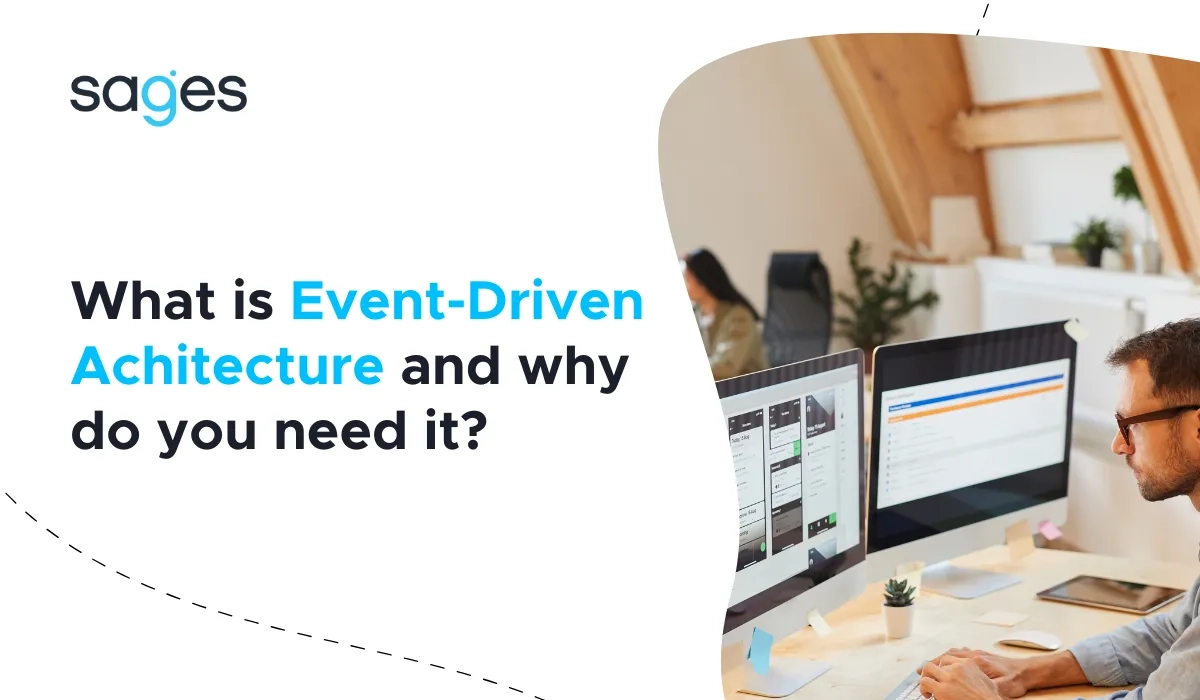In today's dynamic IT environments, organizations are increasingly looking for ways to provide faster, more flexible and scalable solutions. One such approach that is gaining popularity is Event-Driven Architecture (EDA). What exactly is Event-Driven Architecture, and why is it worth investing in education about it? Let's take a closer look at this topic.
What is Event-Driven Architecture?
Event-Driven Architecture (EDA), or event-driven architecture, is an approach to designing information systems in which events play a critical role. Events are any type of significant state change in a system that can be used to trigger appropriate responses or actions.
In traditional systems, processes are often initiated by users or schedules. In EDA, processes are triggered by events, which can come from a variety of sources, such as users, other systems, IoT sensors, or internal business processes.
Key components of Event-Driven Architecture
- Event Issuers: Generate events that report changes in system state.
- Event Brokers: Capture and transmit events to the appropriate recipients.
- Event Recipients: They respond to events by performing specific actions.
An example of an EDA application could be an e-commerce system, where a change in order status (e.g., "order placed", "order shipped") triggers appropriate responses, such as sending emails to customers, updating stock levels or initiating logistics processes.
EDA: the key to modern, scalable and flexible IT systems
Event-Driven Architecture is a powerful tool to support the growth of organizations, helping them become more agile, innovative and effective in a dynamically changing business environment.
Increase scalability and flexibility of systems
Event-Driven Architecture allows you to build systems that are easier to scale and modify. Due to the distributed nature of events, EDA-based systems can better handle heavy workloads and dynamically changing requirements.
Faster response to change
In event-based systems, responses to changes can be instantaneous. This allows for faster information processing and decision-making, which is crucial in many industries such as finance, e-commerce and IoT.
Better integration of systems
Event-Driven Architecture makes it easier to integrate different systems and services, allowing them to communicate in real time. This enables organizations to create more complex and integrated solutions that better meet business needs.
EDA works well with microservices architecture, where each microservice can be a separate event emitter and/or receiver. This enables modular, easily manageable and scalable applications.
Reduced complexity and fault tolerance
With proper design, EDA-based systems can be less complex to maintain. System components are loosely coupled, making it easy to upgrade and replace them without affecting the overall architecture. Events are isolated units of operation, simplifying system testing and debugging. Each component can be tested independently, leading to more efficient error detection and repair. Thanks to the loose coupling of components, failure of one part of the system does not directly affect the whole. EDA-based systems are therefore more resilient to failures and can continue to operate despite problems in individual modules.
Easier tracking and auditing of events
In EDA, every event is logged, making it easier to track and audit system activities. The ability to recreate the history of events is particularly useful in regulated industries such as finance and healthcare.
Improving performance through asynchronicity
EDA enables asynchronous event processing, which means systems don't have to wait for one process to finish before starting another. This leads to better resource utilization and improved overall system performance.
All these benefits make Event-Driven Architecture not only a trendy approach, but also a practical solution for modern organizations that want to achieve better efficiency, flexibility and innovation.
Sign up for Event-Driven Architecture training
Want to learn more and gain practical skills in Event-Driven Architecture? Attend our Event-Driven Architecture training course. This course will provide you with a solid theoretical foundation and practical experience to help you effectively design and implement event-driven systems.
Summary
Event-Driven Architecture is a powerful approach to the design of modern IT systems that offers many benefits, such as increased scalability, flexibility, rapid response to change and better integration of systems. Investing in EDA training is a step that can significantly impact the growth of an entire organization. EDA is a key component of digital transformation, helping organizations move from traditional, monolithic systems to modern, modular and flexible architectures. EDA-based systems can better respond to customer needs by providing more responsive and personalized services, as well as experiment with new solutions, test innovations and bring them to market faster than the competition.
Don't wait, sign up today and discover the potential of event-driven architecture! Also check out our other systems architecture training courses - if you're wondering which training is best for your organization, we'd be happy to advise you!




